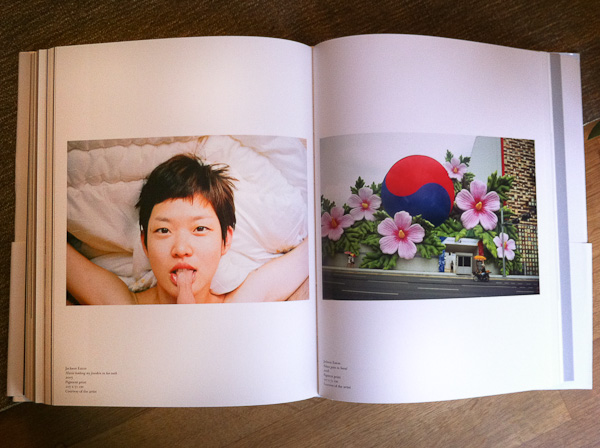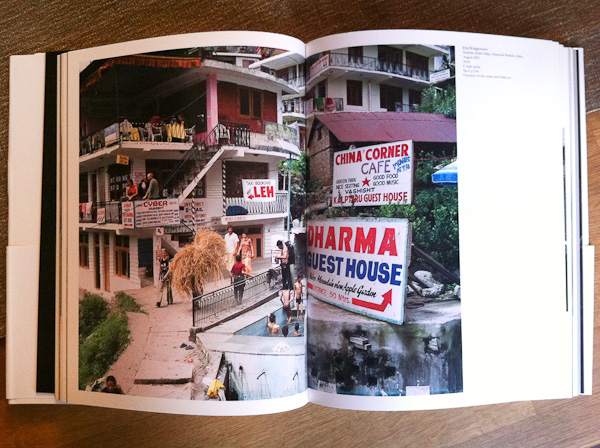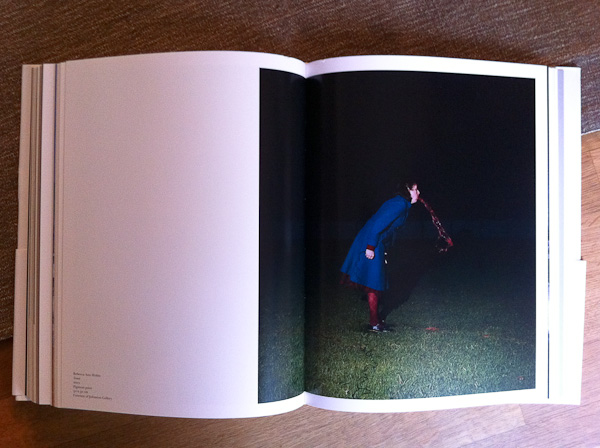 When I first saw Hijacked Vol. 2, I did a double-take. With an Australian mother and German father, you don't come across many photobooks that appear to be you in book form. I had missed Hijacked Vol. 1, Australia/America when it came out two years ago so I was excited to discover the Hijacked 'format'. Each book in the series pairs Australia (the homeland of the brains behind Hijacked, Mark McPherson of Big City Press) with another country (Vol. 3 will take on the UK) to present the work of emerging photographers from both countries. The focus is squarely on up-and-coming photographers... you won't find any big names here, except for as points of reference in the book's many essays which discuss the different schools and influences in both countries.
When I first saw Hijacked Vol. 2, I did a double-take. With an Australian mother and German father, you don't come across many photobooks that appear to be you in book form. I had missed Hijacked Vol. 1, Australia/America when it came out two years ago so I was excited to discover the Hijacked 'format'. Each book in the series pairs Australia (the homeland of the brains behind Hijacked, Mark McPherson of Big City Press) with another country (Vol. 3 will take on the UK) to present the work of emerging photographers from both countries. The focus is squarely on up-and-coming photographers... you won't find any big names here, except for as points of reference in the book's many essays which discuss the different schools and influences in both countries.
Weighing in at a hefty 412 pages with work by no less than 32 photographers (sixteen from each country), Hijacked Vol. 2 is a sizeable undertaking and there is no shortage of young talent to be discovered here. My interest in the project is best summed up by the questions asked in the introduction to one of the essays in the book: "What connects photographs created at opposite ends of the globe? (...) And even more fundamentally: is there such a thing as specifically German or Australian photography at all?" Beyond showcasing individual young talents, what struck me as most interesting about Hijacked is that although it groups photographers together based on nationality, it also questions the notion of a coherent national photography. I think this is particularly important given how often photographs are grouped together based (often arbitrarily) on nationality and the general reluctance to look at different photographic cultures from a comparative perspective. I was intrigued to see whether the book would create the impression of two coherent bodies of photography and how these two groups would resonate with each other.
The German and Australian sections of the book left me with different impressions and, overall, my preference was for the former (sorry mum!). I think this is natural given that Germany has a much stronger photographic tradition, a more developed photographic education system, and a bunch more photographers to choose from! I was particularly taken with Jörg Brüggemann's work, which deals very intelligently with the illusion of 'adventure' travel to places like Thailand or India. Having just returned from a two-week trip in Morocco, these days it is difficult to escape the feeling that tourism has become the global equivalent of the amusement park, with the same overblown drama and suspension of disbelief. Brüggemann's pictures are the first I have seen that look at the interaction between tourist and 'local' and the different expectations of these two groups. As with this work, many of the German pictures in Hijacked Vol. 2 were not taken in Germany, which is a small illustration of the complexity of defining a national photography.
Overall the German selection felt more coherent to me, perhaps because of these anchors of education and tradition. As for the Australian selection, it seemed a little chaotic and I would have liked to see more work that engaged with Australian national identity in an interesting way. Although some of the work felt derivative to me (Bronek Kózka, Suzie Fox), there is a lot to discover here: I particularly enjoyed Michael Corridore's 'barely there' images that brilliantly capture the blazing atmosphere of their subject and the delightfully awkward work of Rebecca Ann Hobbs who bravely takes on perennial Australian themes, including vomit and possums, with hilarious results. The good thing with Hijacked is that with a selection as broad as this you will definitely find a lot to love. However, the flipside of this is that the sprawl of the selection felt overwhelming to me. Even in the case of the seven (!) different essays, it felt like the authors were stepping on each other's toes: although they raise a lot of interesting points they often were covering similar ground.
The printing of the book is good and the design and production are of an equally high standard. Although I think Hijacked Vol. 2 falls short of its ambitions and could have benefited from some trimming down, this remains a rare and intriguing look at the emerging Australian photo scene and one that raises interesting questions about the idea of a coherent national photography.
Hijacked Vol. 2, Australia/Germany (Heidelberg: Kehrer Verlag/Perth: Big City Press, hardcover, 26.6 x 21.2 x 4.3 cm, 412 pages, colour and B&W plates, 2010)
Rating: Worth a look


